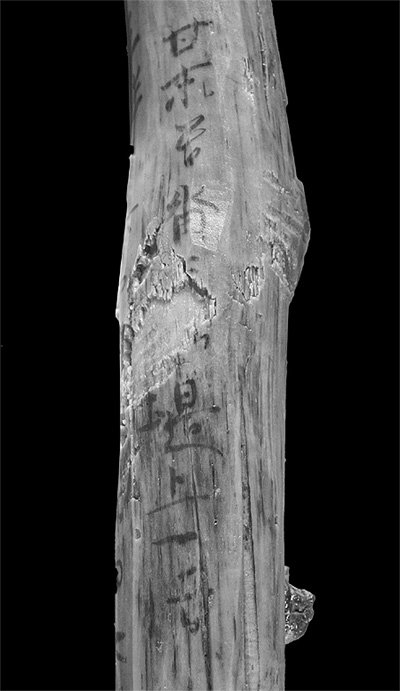Sixth-century land document found in Gyeongsan City
Sixth-century land document found in Gyeongsan City
Posted December. 10, 2019 07:25,
Updated December. 10, 2019 07:25

A piece of wood has been unearthed, which appears to have served as a document for land management during the Silla era in the sixth century.
The Cultural Heritage Administration announced Monday that it found a wood document that has 94 letters engraved at the site of Sowol-ri in Gyeongsan City, North Gyeongsang Province. The wood document was found beneath a face-shaped earthenware, which was recently revealed in the same spot.
About 74.2 centimeters long, the wood piece was fashioned from a crooked tree, exhibiting letters written on six different sides. The letter “Dap,” a traditional Korean Chinese letter referring to rice paddies, is written on the wood. It also contained other letters of significance such as “Gyeol” and “Bu,” which were used as unit of land for taxation. Previously, the two words were believed to be used in the seventh century after unification of three ancient kingdoms, but the latest findings show that the units had been used from the sixth century.
The letters “Gok” and “Je” are also noteworthy. “Gok” points to the existence of certain groups living in a valley, and “Je” suggests a link between dikes and taxation.
“The writing style and the content suggest that it is a wood recording on the land status near Gyeongsan area,” explained an official from the culture agency. “This will offer a glimpse into the then structure of local villages centered around valleys and dikes, the existence of dikes and rice paddies for productivity boost, and the governance dynamics of the central government and its taxation.”
Jong-Yeob JO jjj@donga.com







